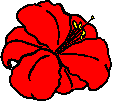 Shields
Gardens
Shields
Gardens
| Home |
| Daylilies |
| Rare Bulbs |
| Clivia |
| Seed Sales |
| E-Mail and Chat |
| Photo Gallery |
| Information |
| Sources |
| Guest Sites |
| Societies and Clubs |
| Links |
| People |
| About Us |
Well-grown Clivia plants eventually get too large. When my plants start to crowd in a 5-gallon container, I know it is time to divide and repot. The first task will be to get the plant out of its container. In a plastic container, the simplest way is to get a stout, sharp knife and slice through the plastic, all the way from top to bottom, two or three times. Try to hold the knife as nearly parallel to the container wall as ppossible while cutting, to avoid damaging too many roots. Plants in clay or ceramic containers will be tougher to extract, and might require the assistance of a couple of strong gardeners. I often end up simply cracking ceramic pots carefully with a hammer.
If the plant is growing in the ground, you face a much tougher job. You may want to just dig out a section of the plant, leaving the rest of it undisturbed. Dig around the outside of the clump, cutting through as few roots as possible. When the outer boundary of the section of the clump you want to dig up is exposed, you can cut very carefully through into the center of the clump. Spare as many of the roots as possible.
Once the clump is extracted form its container or from the ground, remove as much of the soil from the roots as you can. Shake as much soil off as you can. Use your fingers to work into the spaces between the roots where soil is held, and loosen it up.
Now comes the traumatic part: cutting through the rhizomes to free the various offsets. Use a loong, sharp, and sturdy knife. Cut through the thick rhizome between the crowns, leaving as much of the rhizome on the freed division as possible. All I can say is, "Try to do as little damage as possible!" Take your time, be careful, and don't cut you fingeers in the process.
Some points to remember:
I haven't tried it on Clivia, but when we divide clumps of Hemerocallis (daylilies), we powder the cut surfaces with dry fungicide. We used to use benlate (benomyl) for this, but now we use Cleary 3336® (thiophanate-methyl) wettable powder. Be sure to wear rubber gloves to protect your skin from irritation by the fungicide if you do try this.
For information about this account, contact:
Jim Shields <shieldsgardens@gmail.com>, webmaster
10 February 2012
© Copyright 2012 by James E. Shields. All rights reserved.